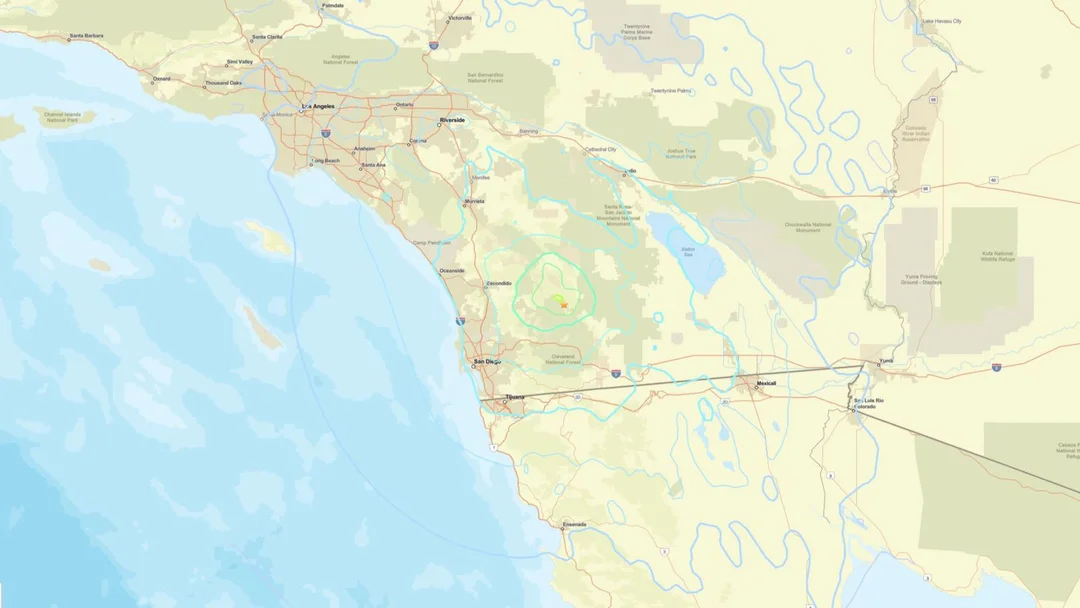
5.2 Magnitude Earthquake Shakes Southern California, Sending Shockwaves Across Neighboring Regions
On Monday morning, Southern California was jolted awake by a 5.2-magnitude earthquake centered near Julian, a quaint mountain community east of San Diego. Recorded at 10:08 a.m. PT, the quake not only shook Julian but also sent tremors felt in Los Angeles, Orange County, and beyond. Thankfully, reports indicate no significant injuries or damage, underscoring the resilience of the region amidst its seismic challenges.
The U.S. Geological Survey confirmed the earthquake's epicenter just a couple of miles away from Julian, a small town known for its celebrated apple pies. The quake struck at a depth of approximately 8 miles (13 kilometers), which is considered relatively deep for California earthquakes. Dr. Lucile Jones, a seismologist at the California Institute of Technology, pointed out that the quake was a part of the active Elsinore fault line, a region notably quiet for substantial seismic activity historically.

In the town of Julian, some residents reported minor disruptions, such as falling picture frames and briefly rattled nerves. Paul Nelson, owner of a local gift shop, shared, “I thought the single-pane windows were going to crack because they were shaking pretty good, but they didn’t.” Similar experiences echoed in numerous reports from residents who felt the quake in various parts of the region. However, the lack of significant damage has brought a sigh of relief to local authorities and emergency services.
Transportation officials took precautions following the earthquake, warning motorists about potential debris on highways, particularly along State Route 76. Additionally, North County Transit District services were temporarily suspended to inspect tracks, though no extensive damages were found. California Governor Gavin Newsom was briefed on the incident and stated that the state is in cooperation with local agencies to monitor the situation effectively.
Despite the initial fright, experts classified the earthquake as one that typically does not pose long-term threats. Dr. Jones noted that while it is common for a quake to have aftershocks—some already recorded in the 2 and 3 magnitude range—there is only a 5% chance that this recent event may precede something more significant.
As many residents remain on alert, a notable instance occurred when alerts were mistakenly sent to Michigan residents due to the utilization of portable cell towers during recovery from an ice storm. Lieutenant Ashley Miller of the Michigan State Police acknowledged, “It is an odd alert to get in Michigan.”
With over 25 million people experiencing at least light shaking from this quake, the importance of earthquake preparedness remains paramount in California. As seismologists continue to assess the situation, understanding the moments, behaviors, and data that surround these events can aid both in mitigating panic and reinforcing a culture of readiness amongst the populace.
In closing, how prepared do you feel for the next potential seismic activity? Share your thoughts and personal experiences below.
Related issues news
What caused the San Diego earthquake?
Seismologist Dr. Lucy Jones said this earthquake is likely associated with the Elsinore Fault, which is a branch of the larger San Andreas Fault system. Jones said the depth of the quake was about eight miles below the surface of the Earth.
What fault line is Julian, CA?
PT near Julian, California. The quake was preceded by a 3.3 magnitude foreshock just before 4 p.m. Sunday, Dr. Lucile Jones, a seismologist working with Caltech, said on a call following the quake. Jones said the quake seems to be associated with the Elsinore fault line.
What is an aftershock earthquake?
USGS says aftershocks are a sequence of earthquakes that happen after a larger mainshock on a fault and are a natural part of the Earth's readjustment process after a major earthquake.